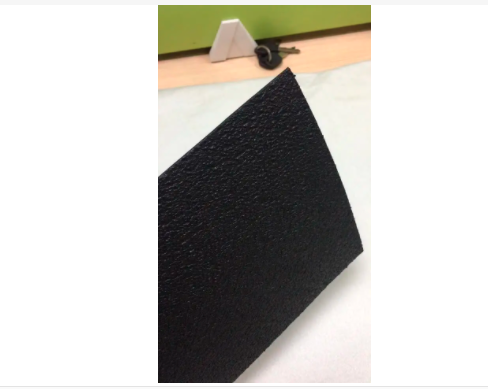- Understanding the Role of Geomembrane Liners in Waste Management
- Innovations in Geomembrane Liners for Water Management
- Geomembrane Liners: A Comprehensive Guide
- The Future of Geomembrane Liners in Civil Engineering
- Geomembrane Liners: Enhancing Landfill Stability
Manager:
WhatsApp:+86 177 0135 2670
Tel:+86 177 0135 2670
Email:marketing@okorder.com
Address:3rd Floor, No.2 Building, No.1 Sanlihe Road
THE INVISIBLE SHIELD: EXPLORING THE WORLD OF IMPERVIOUS GEOMEMBRANES
Silently guarding our ecosystems from the invasion of pollution and degradation through environmental protection and industrial engineering are impervious geomembranes. Examining these futuristic barricades, I am always amazed by how much they influence our sustainable approach to life. Today, modern environmental guardianship does not entail only those impermeable films; it also means using that material called impervious Geomembrane.
THE PROTECTIVE VEIL: hdpe Geomembrane SHEETS
It is a remarkable milestone in contemporary engineering with an HDPE geomembrane sheet rendering an impenetrable barrier resistant against various chemicals and environmental stresses. These sheets are designed as a long-life solution for containment or lining applications, ensuring the structural soundness of environmental facilities over time. Their high tensile strength and flexibility make them ideal for a variety of applications, from landfill liners to water reservoirs.
APPLICATIONS IN ENVIRONMENTAL REMEDIATION
Impervious geomembranes have become an indispensable tool in site remediation. They include composite cutoff walls made of HDPE geomembrane combined with soil-bentonite backfill soils that have proven effective. This technique was successfully applied in China's project on acidic liquid leakage containing copper which tested the power of HDPE materials in addressing intricate ecological issues. The use of this type of geomembrane in vertical barriers has been regarded as one of the safest and most efficient ways to prevent horizontal migration of pollutants.

THE HEAT-INSULATING PROPERTIES OF GEOMEMBRANE COMPOSITES
In addition to their impermeability, HDPE geomembrane composites can provide heat-insulating properties that are essential for applications such as breakwaters around power stations. Therefore, their ability to withstand thermal stress conditions while maintaining integrity demonstrates the multifunctional nature exhibited by HDPE. This dual functionality makes them indispensable for projects where both impermeability and thermal management are needed.
ANALYZING SEEPAGE CHARACTERISTICS: A KEY TO DAM CONSTRUCTION
The usage of impervious geomembranes in dam construction under deep overburden conditions has been extensively researched. The researchers used finite element methods to analyze the seepage properties of earth-rock dams with geosynthetic clay liners. In the analysis, the effects of hanging cutoff walls’ depth, depth of overburden, and permeability on seepage field in dam foundations were determined thereby emphasizing their significance in ensuring that a liner’s function as an impermeable barrier is well preserved. These findings therefore suggest that careful design and construction are required when using such liners so as to maximize their performance.
RESEARCH ON THE WORKING STATUS OF IMPERMEABLE GEOMEMBRANES
Detailed research has been conducted regarding how impermeable geomembranes perform on highly fissured membrane faced rockfill dams. Consequently, studies have tried to understand the ‘cramp effect’ caused by migration and deposition of impervious geomembranes and decrease in mechanical performance after long term tensile stress. This study has led to the development of simulation devices and techniques for studying mechanical behavior of pvc geomembranes subjected to various types of deformations. The objective is mitigating or eliminating decayed mechanical performance hence extending service life for these essential structures.
Economic implications: balancing costs vs benefit
Though in most cases the price of impervious geomembranes may be high, their long-term advantages often outstrip the initial expenses. Economic sustainability of such geomembranes is directly linked to their environmental friendliness and durability. These geomembranes work as a cost-effective solution by preventing pollution and maintaining the containment structures integrity that will save up on maintenance and remediation costs in the long run.
Innovation and Sustainability: The Future of Impervious Geomembranes
Impervious geomembranes are set to play a bigger role in future as the world looks for more sustainable and environmentally friendly solutions. Their chemical resistance, longevity, as well as cost efficiency make them suitable for different containment and lining requirements. On-going improvements in this sector mean that these geomembrane materials can change with time so that they meet those requirements of tomorrow using today’s solutions.
Conclusion: The Impervious Geomembrane – A Pillar Of Environmental Protection
And I can only admire people who thought of creating impervious geomembranes for protecting our environment since at this point; they remain among us. These materials are not just “material” items; rather they form an invisible barrier that protects our soils and waters from getting spoilt or polluted. In essence, when we come up with new ideas on how best to use these substances, we are not merely constructing edifices but building a heritage—a heritage characterized by environmental stewardship through sustainable engineering for various generations yet unborn. It is not just an impervious geomembrance which is an item; it signifies something more important than that i.e., a signpost towards a greener cleaner future through sustainable innovation.
- Previous:The HDPE Geomembrane Sheet: A Cornerstone of Modern Environmental Protection
- Next:Piscina de geomembrana – A Symphony of Serenity: A Fusion between Water and Design






